 I have been thinking about a way to protect wine from unnecessary oxidation during 2nd and 3rd rackings. Mainly, I want to get the oxygen out of the empty carboy before racking into it, but how? CO2 cartridges? Dry ice? Finally hit upon a simple idea. Since I have to top up with water anyway, why not do the “topping” first, with carbonated water. The escaping CO2, being heavier, will drive everything else out of the carboy. What do you think?
I have been thinking about a way to protect wine from unnecessary oxidation during 2nd and 3rd rackings. Mainly, I want to get the oxygen out of the empty carboy before racking into it, but how? CO2 cartridges? Dry ice? Finally hit upon a simple idea. Since I have to top up with water anyway, why not do the “topping” first, with carbonated water. The escaping CO2, being heavier, will drive everything else out of the carboy. What do you think?
Walt — AR
—–
Hello Walt,
If I am understanding you correctly, you are saying to put any carbonated water needed for topping-up the wine into the empty carboy — first — before racking the wine into it. And, letting the CO2 gas from the water drive the air out of the fermenter. You would be estimating the amount of carbonated water needed for topping up.
I commend you on your idea!
In theory, what you are saying it correct. The CO2 would slowly drive air out of the vessel. The main issue I see is getting enough of the CO2 gas to release to have any real results.
Assuming you only need to top-up the wine with a quart or less of water in a 5 or 6 gallon batch, the amount of CO2 in a quart of carbonated water is not all that great. If you need to top-up the wine with a greater amount of water than this, then you shouldn’t be topping up with water at all, but rather a similar wine or some other method. Here’s some more information on different ways for topping up a wine.
Absolutely, the carbonated water would drive some of the air out of the fermenter, but not nearly all of it. There’s just not enough of it in a quart or less to do the job completely.
The second issue is getting all the CO2 gas to release from the water. Only a portion of the gas will release through agitation. The rest will want to stay saturated in the water. One way to get the CO2 gas to release more completely from the water would be to make sure it’s warm. The CO2 gas will release more freely from warm water than cold.
Having said this, I do not see any problems with putting carbonated water in the fermenter for topping-up the wine. It will be effective in driving out some air, just marginally so.
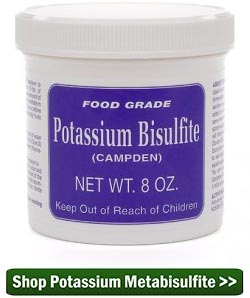 I personally have never concerned myself with purging air from my fermenters when racking. The amount of contact time with the air is not enough to oxidize the wine in any way. Oxidation takes time. The one thing you do have to look out for is splashing. You do not want the splash the wine with racking. Fill the fermenter from the bottom up. That is, have the hose reach to the bottom of the fermenter being filled so that the hose is in the wine during the racking and not splashing.
I personally have never concerned myself with purging air from my fermenters when racking. The amount of contact time with the air is not enough to oxidize the wine in any way. Oxidation takes time. The one thing you do have to look out for is splashing. You do not want the splash the wine with racking. Fill the fermenter from the bottom up. That is, have the hose reach to the bottom of the fermenter being filled so that the hose is in the wine during the racking and not splashing.
Secondly, if [the fermentation has completed, and] you add sulfites such as Campden tablets or potassium metabisulfite to the wine after racking — as you should — you will be driving any air out of the wine and replacing it with SO2 gas in a matter of minutes.
There is nothing wrong with topping-up your wine with carbonated water. I just don’t think it will be affective in purging the air out of the fermenter.
Happy Wine Making,
Ed Kraus
—————————————————————————————————————–
Ed Kraus is a 3rd generation home brewer/winemaker and has been an owner of E. C. Kraus since 1999. He has been helping individuals make better wine and beer for over 25 years.
Category Archives: Q&A
Help! Wine Bottles Exploding When Opened!
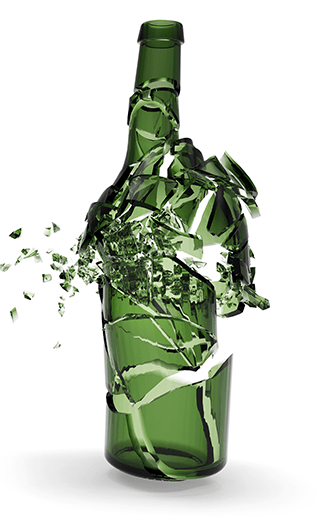 I made a blend of apple and plum wine from fruit from my trees in the backyard. I followed a very commonly used wine recipe on the web and it was bottled at 6 mo old in April. We drank the wine and it tasted good up until this week. The wine bottle we opened exploded like champagne and was a little sour. We opened the final 4 wine bottles left and they all exploded. What could be causing this? I used Campden tablets as recommended by the wine recipe to prevent spoilage. Your help is appreciated!
I made a blend of apple and plum wine from fruit from my trees in the backyard. I followed a very commonly used wine recipe on the web and it was bottled at 6 mo old in April. We drank the wine and it tasted good up until this week. The wine bottle we opened exploded like champagne and was a little sour. We opened the final 4 wine bottles left and they all exploded. What could be causing this? I used Campden tablets as recommended by the wine recipe to prevent spoilage. Your help is appreciated!
Connie — WI
—–
Hello Connie,
Your wine bottles exploding was caused by either one of two things: 1) the wine started fermenting again after being bottled, 2) the wine started spoiling, producing a bacterial growth. Without question it was one of these two things. The bigger question is why…
- If you added more sugar before bottling, then more than likely it is a matter of the fermentation starting up again — even if you added Campden tablets at bottling time. Campden tablets are not enough to guarantee that a re-fermentation will not occur again sometime down the road. Whenever sugar is added to sweeten the wine, potassium sorbate should also be added along with the Campden tablets.
- If you did not add more sugar before bottling, it is possible that the original fermentation did not finish completely. In other words, the fermentation stopped prematurely. This can happen for a number a reasons — the most common being a temperature change of the wine must. This is known as a stuck fermentation. The yeast did not finish the job completely before stopping. Then, weeks or month later, after the wine has been bottled it decides it will start up again. The result is your wine bottle exploding.
Again, the fermentation can stop and start for a number of reasons, but the most common one is because of a change in temperature. The wine bottles probably warmed up a bit making it easier for the wine yeast to start fermenting again. Just 5° or 10° is all that is needed. Just as before, Campden tablets added at bottling time is not enough to guarantee that you won’t have your wine bottle exploding.
 In the future, the easiest way to make sure that you don’t have a stuck fermentation is to check it with a hydrometer. The hydrometer will tell you if there are more sugars in the wine must to be fermented, or if all the sugars are gone, and the fermentation has actually completed the job at hand, and using a hydrometer is very easy.
In the future, the easiest way to make sure that you don’t have a stuck fermentation is to check it with a hydrometer. The hydrometer will tell you if there are more sugars in the wine must to be fermented, or if all the sugars are gone, and the fermentation has actually completed the job at hand, and using a hydrometer is very easy.
If none of the above is ringing any bells or if you did check your wine with a hydrometer before bottling, then it is possible that the wine bottles exploding was caused by a bacterial infection of some sort. This is not the likely scenario, but it can happen.
If you know that there was no sugar in the wine at bottling time, whether it be leftover from the fermentation or sugar you added for sweetening, then a bacterial infection could be what’s going on. The one paramount factor that would rule this out is if you added Campden tablets right before bottling. Campden tablets or sulfites of any kind would easily preserve the wine from such a bacterial infection.
Wine bottles exploding is something that nobody wants to have happen, but it is completely preventable. Just be sure that if there’s sugar in the wine at bottling time — whether it be from leftover from the fermentation or sugar you’ve added — that you add potassium sorbate to the wine. This would be in addition to the Campden tablets that should always be added. Do these things and you will not have wine bottles exploding.
Best Wishes,
Ed Kraus
—————————————————————————————————————–
Ed Kraus is a 3rd generation home brewer/winemaker and has been an owner of E. C. Kraus since 1999. He has been helping individuals make better wine and beer for over 25 years.
Why Does My Homemade Wine Smell Like Pine?
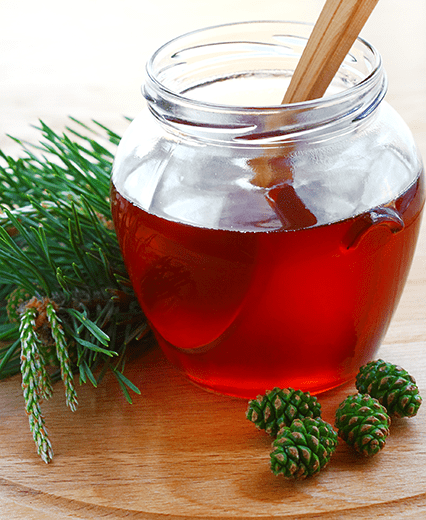 I made an apple-honey-raspberry wine that tasted fine at bottling. Now 2 months later, it smells like pine. What chemical is that?
I made an apple-honey-raspberry wine that tasted fine at bottling. Now 2 months later, it smells like pine. What chemical is that?
Kjuten — CA
—–
Hello Kjuten,
The pine smell in your wine is not related to any chemical that might have been used in the winemaking process. It is a trait that you will find even in some commercially produced wines — mostly Cab. and Merlot grape wines, sometimes Rieslings. But, never in amounts as to be offensive. It is typically detected as a subtle note.
The pine smell is caused by natural compounds in the wine called terpenes. These terpenes are found naturally in fruits, vegetables, herbs. This is how they came to be in your wine. When terpenes go through the aging process they can produce all types of aroma ranging from floral to green pepper — and yes, the pine smell that is in your wine. At different points in the aging process the aroma produced can be different. This is because during the aging the terpenes are continually changing through enzymatic activity.
Continue reading
Did Degassing My Wine During Fermentation Mess It Up?
 I have mixed up two batches of white wine. Seems like the fermentation is taking way too long. After 12 days I went ahead and racked both batches. They continued bubbling and fermenting for 10 more days. I had to leave for vacation so I degassed both batches before leaving. This stopped the fermenting instantly. Did I mess up?
I have mixed up two batches of white wine. Seems like the fermentation is taking way too long. After 12 days I went ahead and racked both batches. They continued bubbling and fermenting for 10 more days. I had to leave for vacation so I degassed both batches before leaving. This stopped the fermenting instantly. Did I mess up?
Brad — FL
—–
Hello Brad,
It’s not very likely that you messed any thing up by degassing your wine while it is still fermenting. Stirring a fermentation too vigorously can shock it, but it usually reorganizes itself and starts back up again.
A fermentation actually causes a slow current of activity within the wine must, with the yeast rising and falling. The yeast will hitch a ride on the CO2 bubbles being produced. Once a bubble reaches the top, the yeast fall to the bottom again. This process occurs over again and again throughout the fermentation. Continue reading
Think Twice Before Shipping Your Homemade Wine
 How do I ship some of my homemade wine from Illinois to my brother in Colorado. He tried some at a party and would like to try my other wines.
How do I ship some of my homemade wine from Illinois to my brother in Colorado. He tried some at a party and would like to try my other wines.
Name: Dan D. — IL
—–
Hello Dan,
Unfortunately, shipping wine to family, friends — or anyone for that matter — is illegal on a Federal level. This means if you are caught you could be charged with a Federal offense. As an individual, shipping or transporting alcohol across state lines for the purpose of consumption is a big no-no! This is the case regardless if you have made the wine or not. It doesn’t matter if you know the person or not.
It would be possible to ship wine to brother and friends if you were a licensed winery or alcohol distributor, but even then each state has its own rules about importing and exporting alcohol, so you would be at the mercy of both Illinois’ and Colorado’s state rules. Most of the regulations are just nonsense left over from prohibition, others are sternly there to protect the distributors and producers within their state. The home winemaker is just caught up in the broad net being thrown. Continue reading
3 Reasons Why A Homemade Wine Can Be Bitter
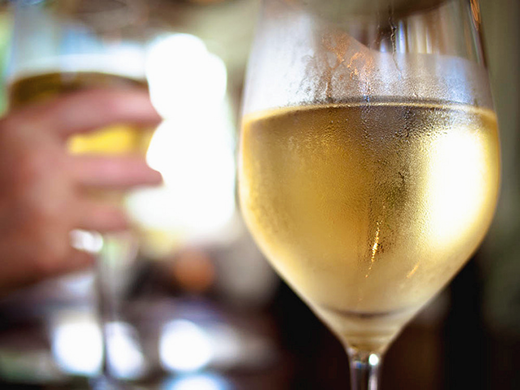 In May I bottled my 2013 Riesling made from Riesling juice. Prior to bottling I filtered the wine, and added simple syrup, potassium sorbate, and kmeta, all in the correct quantities. It tasted very good at bottling time, however, now after a few months has passed, it has become drier and has a slightly bitter finish. What caused this change, and is there anything I can do now to correct it, even if I have to open all 4 cases? Also, what can be done to prevent this from happening the next time I make Riesling? Would ascorbic acid have help prevent this from happening?
In May I bottled my 2013 Riesling made from Riesling juice. Prior to bottling I filtered the wine, and added simple syrup, potassium sorbate, and kmeta, all in the correct quantities. It tasted very good at bottling time, however, now after a few months has passed, it has become drier and has a slightly bitter finish. What caused this change, and is there anything I can do now to correct it, even if I have to open all 4 cases? Also, what can be done to prevent this from happening the next time I make Riesling? Would ascorbic acid have help prevent this from happening?
Name: John S.
State: OH
—–
Hello John,
I don’t know if I have an exact answer for you or not as to why your homemade wine is bitter.
My first thought is that there is some slight fermentation going on in the wine bottle. The increase of yeast cells can make the wine bitter. But, this would be evident by bubbles or sparkle in the wine along with pressure when popping the cork. You did not mention either of these, so I doubt this is what’s going on. Continue reading
What's The Difference Between Apple Wine And Apple Cider?
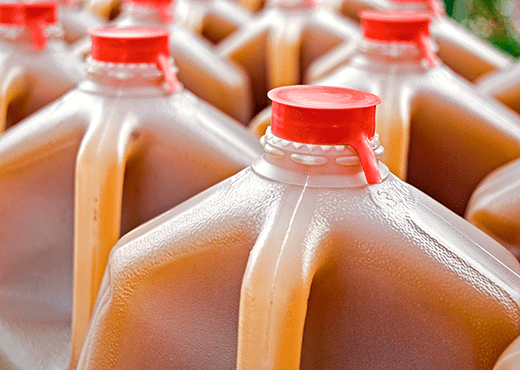 What is the difference between apple wine and apple cider? Is the recipe different? Is the manufacturing procedures different?
What is the difference between apple wine and apple cider? Is the recipe different? Is the manufacturing procedures different?
Name: Clifton C.
State: Texas
—–
Hello Clif,
Apple wine, apple cider and hard cider are sometimes used to mean the same thing by some people. There is no difference as to how some people use these terms. One person may say apple cider, meaning apple wine; someone else may say apple cider, meaning hard cider. And to make it more convoluted, sometimes apple cider means just plain ole apple juice.
So just what is the difference between apple wine and apple cider? The information below should help to clear this up:
- Apple Cider:
In the United States, it means the same as apple juice. You can go to some markets in parts of the country and see apple juice and apple cider side by side. Some areas of the U.S. will make the distinction that apple juice has gone through filtration and pasteurization whereas apple cider has not. It is straight, raw apple juice. - Hard Cider:
This is apple juice or apple cider that has been allowed to ferment. The natural sugars in the apple juice ferment to an alcohol level that runs somewhere around 3% to 6%. It is interesting to note that in most English-speaking countries — other than the U.S. — hard cider is just called apple cider. It is assumed that if you have raw apple juice it has probably gone hard. Hard cider is very easy to make and can even be sparkled in beer bottles. - Apple Wine:
This is a hard apple juice as well, but it is much higher in alcohol. It is essentially apple juice that has gone through the same process as you would making wine. The acidity is adjusted. Nutrients are used. And, it is bottled and aged. But, most significant of all is sugar is added to the fermentation to bring up the final alcohol level of the apple wine. Most are around 10% to 12%. Try making apple wine yourself.
It is also helpful to understand that there is a difference between how apple wine and apple cider keep and age.
Hard cider needs to be consumed more quickly than apple wine. The lower level of alcohol makes it less stable. The use of sulfites and maybe even constant refrigeration will help in this regard, but even at that you will discover that apple cider is a drink that is to be consumed in weeks and months, not years.
Apple wine on the other hand is more stable. It has a higher alcohol content which makes it less susceptible to spoilage and general flavor deterioration. Having said this, you should still use sulfites when making it — just like you would with any other wine you make. And just like most wines, you will find that it will taste a little harsh at bottle time. It needs time to age out its harshness. Typically, an apple wine will be very drinkable at around 3 months of aging and at its best at around 9 months.
So, that’s essentially what the difference is between apple wine and apple cider. I hope this clears things up for you and that this was the information you was looking for.
Happy Winemaking,
Ed Kraus
———————————————————————————————————
Ed Kraus is a 3rd generation home brewer/winemaker and has been an owner of E. C. Kraus since 1999. He has been helping individuals make better wine and beer for over 25 years.
Adding Sugar To A Sweet Reserve Wine Ingredient Kit
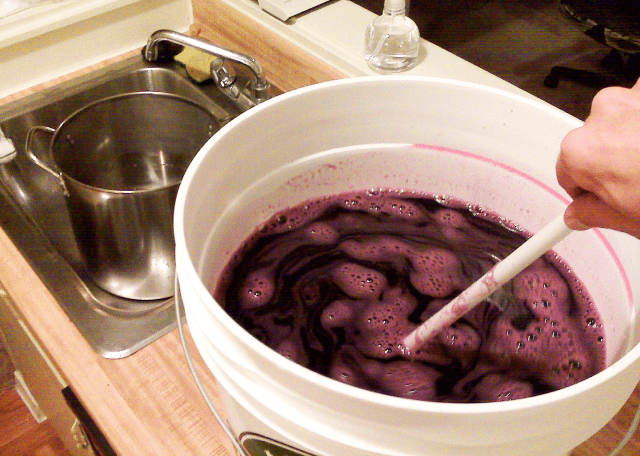 I usually use a wine sweetener or conditioner but with the kit I got today it has a sweet reserve bag, can I still use the conditioner or will this make it too sweet
I usually use a wine sweetener or conditioner but with the kit I got today it has a sweet reserve bag, can I still use the conditioner or will this make it too sweet
Name: Al W.
State: KY
—–
Hello Al,
A sweet reserve is included when a wine ingredient kit is making a style of wine that is normally as some sweetness. In other words, when you buy this particular type of wine at the store it is known to have some sweetness and is expected to be as such. Examples of this would an Ice Wine or a German Gewurztraminer. Either of these may come with a sweet reserve pack, but the amount of sweetness added can very greatly.
The fact that the wine ingredient kit you have in front of you has a sweet reserve pack means that some sweetness will be added to the wine, but whether or not it is enough sweetness for your personal taste is another question.
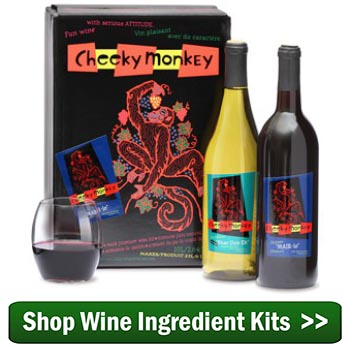 I would suggest to you that you make the wine ingredient kit as directed. Follow the instructions that came with it step for step. When it comes time to bottle the wine, taste it and see what you think. Based on your own personal tastes, do you need to add more sugar to wine ingredient kit? You are the only one how can tell, because it’s all about making the wine the way you like it.
I would suggest to you that you make the wine ingredient kit as directed. Follow the instructions that came with it step for step. When it comes time to bottle the wine, taste it and see what you think. Based on your own personal tastes, do you need to add more sugar to wine ingredient kit? You are the only one how can tell, because it’s all about making the wine the way you like it.
If you would like to make the wine sweeter it is just a simple matter of adding more sugar. It can be wine conditioner, or it can be cane or corn sugar. Whichever you choose, just remember that it should be in a simple syrup form before adding so that you are sure the sugar is dissolved and not just settling to the bottling of your fermenter.
You do not need to add anything else to guard against a re-fermentation. Wine ingredient kits that have a sweet reserve pack already come with ingredients for preventing this. If you followed the instructions it should already be in the wine.
I hope this information helps you out. Just be assured that there is absolutely nothing wrong with adding more sugar to a sweet reserve wine ingredient kit. Add sugar syrup to taste; it’s as simple as that!
Best Wishes,
Customer Service at E. C. Kraus
—————————————————————————————————————
Ed Kraus is a 3rd generation home brewer/winemaker and has been an owner of E. C. Kraus since 1999. He has been helping individuals make better wine and beer for over 25 years.
Wow! Each Bottle Of Homemade Wine Tastes Different!
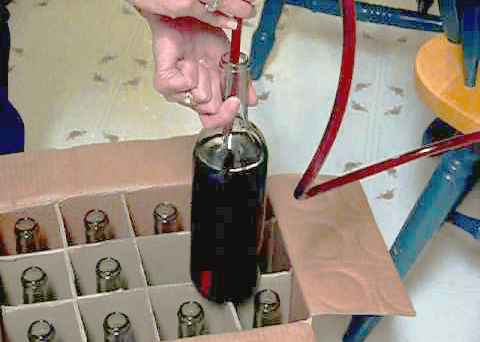 Hello,
Hello,
I recently opened a few bottles of a French Cab that I made / bottled in June 2013. The first bottle had quite a bit of sediment in the bottom and the wine did not have a distinct smell or taste. The second bottle was clear but had absolutely no taste whatsoever!? The third bottle was also clear but also lacks a definitive wine taste but is measurably better than the first two. How is it that each bottle from a single batch can yield dramatically different results. The wine seemed very clear when I bottled it last year and smelled typical of previous batches I made in the past. This is my first batch that did not come out and I cannot figure out what I did wrong!?
Name: Kris
State: Ohio
—–
Hello Kris,
Thank you for this great question. It’s one that comes up from time-to-time, so I think it’s great that we cover it on the blog.
First of all, your expectation is correct in thinking that all your bottles of homemade wine should taste the same, and normally this is the case. But there are some variations in small-batch winemaking that can at times cause the bottles of wine to taste different from one bottle to the next.
One of the main reasons variation happens occurs at bottling time. It is because the wine was not racked before bottling. Hopefully, you racked your wine before bottling, but it you didn’t, this could be what is going on.
Wines that are bottled at the beginning of bottling can turn out different than wines bottle at the end. This is because wine at the top of the carboy may have different characteristics than wine at the bottom of the carboy. While you may not be able to see it, proteins and other compounds can be concentrating towards the bottom while lighter elements can be rising to the top.
This is one of the many reasons we recommend that you always rack the wine before bottling your wine. Not only does it get the wine off any sediment, it evens it out or homogenizes all the compounds in the wine. Even wineries will take steps to help insure that each wine bottle is being filled with the exact same wine.
Kris, here are some other things that can affect a wine on a per bottle level:
- Color of the wine bottle. Clear wine bottles let in more UV rays than green. And green wine bottles let in more UV rays than brown. UV rays are a catalysts for oxidation. So if you are using a mix of bottles for your batch, this could be a reason for the variation.
- Amount of light. Is there a light source that hits only part of the batch while it is being stored? More light means the potential for more oxidative effects. It’s always best to store your wines in the dark.
- Variation in temperature. Are some of the bottles closer to a heat source that other, heat vents, outer-exposed walls, etc? Just like excessive UV rays, warmer temperatures can promote oxidation.
- Variation in corks. Corks are a natural product. They are produced from the bark of a corks tree. Because of this, no two corks are exactly the same. One cork my allow more air to pass than the other. This slight variation can cause one bottle of wine to age differently than the next.
I think you get the idea…
The reason your bottles of wine are varying could be because of any of these — or a combination of these — but having said this, I still have to go back to the fact that it is usually because the wine was not racked directly before bottling.
Best Wishes,
Ed Kraus
————————————————————————————————————–
Ed Kraus is a 3rd generation home brewer/winemaker and has been an owner of E. C. Kraus since 1999. He has been helping individuals make better wine and beer for over 25 years.
My Homemade Wine Gives Me Heartburn
 We have been making wine for a few years now. Everything from blueberry, blackberry, pear, apple, strawberry, peach, and pineapple. Mostly from fresh fruit but lately some from frozen fruit. The big problem we have is that after 2 glasses I am dying from heartburn! I’m not sure what to do to lessen the acid and after reading some books I’m even more confused and I’m not even sure which acid i should be adjusting! Can you help?
We have been making wine for a few years now. Everything from blueberry, blackberry, pear, apple, strawberry, peach, and pineapple. Mostly from fresh fruit but lately some from frozen fruit. The big problem we have is that after 2 glasses I am dying from heartburn! I’m not sure what to do to lessen the acid and after reading some books I’m even more confused and I’m not even sure which acid i should be adjusting! Can you help?
Name: Ann
State: NY
—–
Hello Ann,
What it boils down to is that you have too much acid in your wine. This is why it is giving you heartburn. When I say acid, I am referring to the tartness that is in the fruit combined with the acid you added per any wine recipe.
Typically, a wine recipe will call for acid in the form of Acid Blend. This is a blend of the three most common acids found naturally in fruits: citric, tartaric and malic. You can find more information about Acid Blend on our website.
You can end up with too much acid in your wine even if you are following a wine recipes. This is for the simple fact that the wine recipe does not know exactly how much acid is in the fruit you are using. It varies, and the recipe can only make a good guess.
To Always Have The Tartness Of Your Wines Spot-on…
You need to use an acid testing kit when preparing the wine must. The acid testing kit is essentially a titration kit that will tell you how much acid is in a sample of the wine must as a percentage.
Take a reading before you add any Acid Blend called for in a wine recipe. Once you have this reading, the directions will tell you how much Acid Blend to add to get to the target reading. You will typically be shooting for a range of .55% and .75%.
By taking these actions you will be taking control of your wine’s acidity, and you will be saying goodbye to your heartburn reaction to the wine.
Here’s an example. Let’s say you are making a blackberry wine. You would mix up the wine must as you normally would, except don’t add the Acid Blend. Instead, you take a reading to see how acidic the wine must is without the Acid Blend.
Let’s say you get a reading of .25%, but you want your wine to be .55%. Now you know that your need to raise the acidity percentage by 30 points. Here’s an interesting fact to help you along:
For every teaspoon of Acid Blend you add to a gallon of wine, you will raise the acid percentage by .15%.
With this bit of information, you now know that you need to add 2 teaspoons of Acid Blend to each gallon of wine must to hit your target acidity level. This will raise the acidity to the target level. This can be applied to any fruit wine you decide to make.
As For The Wine’s You’ve Already Made…
A starting point would be to take a reading to see where the acidity stands. Once you know this, you will know what course of action you will want to take.
There are several ways you can go about lowering a wine’s acidity. All of them require that you put any bottled wines back into a common container. If the acidity is not to far off you can add distilled water to dilute it. In a situation that is a little more severe, you can add potassium bicarbonate to neutralize some of the acid. You can also try blending it with another wine that is lower in acid. Each on of these methods has it’s limitation and can be only taken so far.
With all this being said, you are on the right track as to why your homemade wine is giving you heartburn. It’s all about the acidity. Take control of the acid and you will take control of your heartburn.
Happy Winemaking,
Ed Kraus
———————————————————————————————————
Ed Kraus is a 3rd generation home brewer/winemaker and has been an owner of E. C. Kraus since 1999. He has been helping individuals make better wine and beer for over 25 years.
